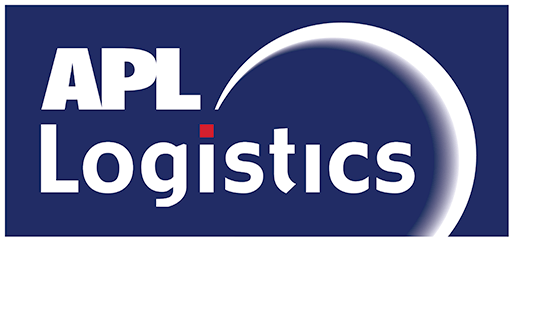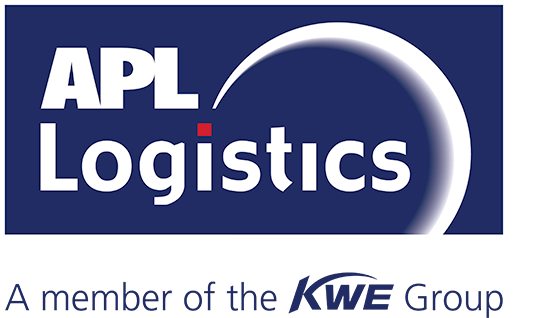November 24, 2021 in Podcast
Keeping Control In A Turbulent Year – Automotive
In a time of uncertainty, automakers need to take a pragmatic approach to familiar topics such as component shortages, supply chain congestions, and the lack of vehicle storage.
In this episode of The APLL Pulse Podcast, Kenneth discusses the trends reshaping the automotive market and potential solutions. A condensed version of the conversation follows.
April Chapman (Host): Hello, everyone. I’m really excited to introduce my guest today, Kenneth Chay. He is the Senior Director of our Global Vertical Management. So, having spent more than three decades at APS Logistics, Kenneth has watched the company progress through massive transformations, and he’s piloted multiple strategies and initiatives. Today, he is part of a team that is powering APL Logistics Automotive business from the U.S. Welcome to the show, Ken.
Kenneth Chay: So, the main issue that is plaguing the auto industry, and it’s made the six o’clock evening news, is the severe lack of semiconductor chips. And that has caused, in part, what you’re seeing as you try to shop for a car. When Covid hits in Q1 last year, many countries, including the US, imposed various degrees of lockdown, right?
The latest snarl up is the Covid-19 cases surged in Asian countries, which is home to many semiconductor factories, especially in countries like Taiwan and Malaysia. So this has prompted even more plants to shut down.
The impact of Covid-19 as I read, was that it will reduce vehicle production worldwide by up to 10.5 million vehicles this year. The dealer inventory that has averaged about forty-five to sixty days in the US is now down to ten, maybe fifteen days. These supply pressures have caused higher prices and slim pickings in terms of the vehicle selection for the consumers, automakers. As we increasingly shift towards a future dominated by electric vehicles, the demand for these chips will increase even more.
A BUMPY ROAD TO RECOVERY
April Chapman: What other impacts are you seeing across the automaker supply chain?
Kenneth Chay: Beyond the chips, the industry is also experiencing a shortage of other components and raw materials, like resin, rubber, batteries. Despite all this, US automakers have had to keep building cars, and that’s because it’s not viable economically for them to shut production, operating and labor cost models are structured and designed to keep a certain level of production going.
So what we’re seeing now, our automakers producing thousands of these semi-finished vehicles and having to park them at these sprawling yards while they wait for certain critical components to come in.
April Chapman: I’ve seen pictures of that. Like you’ve got trucks and different kinds of vehicles, just thousands of them sitting in a parking lot that we can’t quite get to market, right?
Kenneth Chay: This, unfortunately, has created an urgent need for more vehicle storage space. But finding that space is not an easy task. And with materials and parts supply being highly global in nature, automakers, like many companies, importing, are dealing with all sorts of logistical challenges throughout their supply chain. We’re seeing severe congestion at major ports. There’s a lack of freight capacity, basically across all transport modes and container backlogs, everywhere. These are all issues that we have had to manage for our customers on a daily basis.
THE IMPERATIVES FOR SUCCESS
April Chapman: So all in all, not a very pretty sight. Well, I always believe as a change management person, any crisis gives us the unique opportunity to kind of rewrite the rules, and businesses are rewiring the way they operate. They’re constantly shifting gears so that they can be ready for tomorrow’s challenges. So could you share with us what you believe are the keys to success in this dramatic period?
Kenneth Chay: What I’m seeing now is that there is a need to be able to work quicker and smarter, to be more responsive, agile, and creative. Production forecasts are less certain, and when a shipment is ready for us, be it an auto part or finished vehicle, it’s our job to get the shipment to the right location at the right time.
Now, this sounds simple enough in normal situations, but executing this consistently in the current environment can be incredibly challenging. We coordinate daily with multiple part suppliers, assembly plants, transport carriers, and even dealers. We try to secure sufficient capacity, keep deliveries on time, and move containers to the right locations, all while keeping our customers informed.
To get us through this challenging period, APLL has adhered to three enduring principles. I like to call them the three C’s.
1. COMMUNICATION
We need to keep communication lines open and flowing, whether it’s virtual, phone, email, face to face. In an unpredictable operating environment, forecasts and schedules are constantly changing. Communication is vital for success.
2. CONSULTATION
We need to provide customers with an honest but data-driven assessment of the various issues that impact their supply chains. More importantly, we must present realistic options and workarounds so that they can take the right actions, whether they’re preventive or corrective.
3. CREATIVITY
We must find unconventional ways to solve conventional problems. With automakers needing to store more semi-finished vehicles, we proactively helped our automakers analyzed their production data, anticipate the storage needs and pre-secure potential yard space near their plants. By doing so, the yards are always ready to meet the automakers’ needs.
RECALIBRATE NOW
April Chapman: Yeah, just anticipating the needs and already being ahead of that. I like that. That’s great. The pandemic has really put a test on the resolve and resiliency of all people, not just us, but the automotive leaders as well. What do you think will be coming up?
Kenneth Chay: The auto industry, in general, is responding along two parallel time frames, near-term and longer-term, and they’re developing strategies to both. In the near term, I guess they’re basically just trying to weather the storm. While the wildcard is how and where the pandemic evolves, threats of new variants, weather-related disruptions, geo-politics, and trade tensions that can adversely impact the supply chain, automakers can work in a couple of areas:
- Securing a sufficient supply of critical components like chips and batteries to keep production growing and to increase production to meet demand.
- Secure sufficient transport capacity to ship and deliver those parts and finished vehicles.
RETHINK ABOUT THE FUTURE
Kenneth Chay: In the longer term, a lot of these automakers are putting their long-term strategies in place. This is happening at the top management level, even in corporate boardroom.
There is a fundamental rethink of all the strategies with the view to increase supply chain resilience.
Nobody wants to go through what all been through in the last fifteen to twenty months. So companies are now looking at their sourcing and production strategies. They’re looking to diversify their supplier base, looking at the number of countries they source from or bringing production closer to the home market.
We’re seeing a clear bias towards strategies like near-shoring and onshoring of production so that the automakers can exert better control over their supply chain. Listeners may or may not be aware of this, but automakers are also actively looking at reducing the number of chips and the variety of chips used in automotive design. They’re also looking at vertically integrating some of their outsourced suppliers for critical parts such as batteries and chips.
Then, as an offshoot of these production and sourcing strategies, they are also reconfiguring their supply chains.
So, companies are asking what’s the optimal mix or trade-offs between choosing global or regional, or local supply chains. Traditional global supply chains typically have the most handoffs, the longest lead time, and are often, the most complex to manage, even though they may be cheaper. In comparison, the regional or localized supply chains tend to be more agile, responsive to consumer demand signal changes, and require shorter lead times.
Lastly, I think there’s also fundamental review of how much inventory automakers want to carry.
For the past two to four decades, automakers have essentially operated on a just-in-time inventory for loss. Well, that hasn’t worked out very well. So how much just in time versus just in case inventory do they want to carry? How much buffer stock is sufficient to increase resilience in the supply chain, without moving into what we call excessive inventory costs? So all in all, just a lot going on in autos.
April Chapman: I think that through these challenges, automakers will create a stronger, resilient supply chain afterward, something that we won’t regret having to go through the change. The pain, you don’t like it when you’re in it, but when you look back and you’ve made the changes, you appreciate it. That’s what I’m hoping for soon.
April Chapman: Ken, thank you so much for sharing your insight with us. We appreciate you.
Kenneth Chay: Well, thanks for having me.
Listen on Spotify Listen on Apple Podcasts Watch on YouTube


